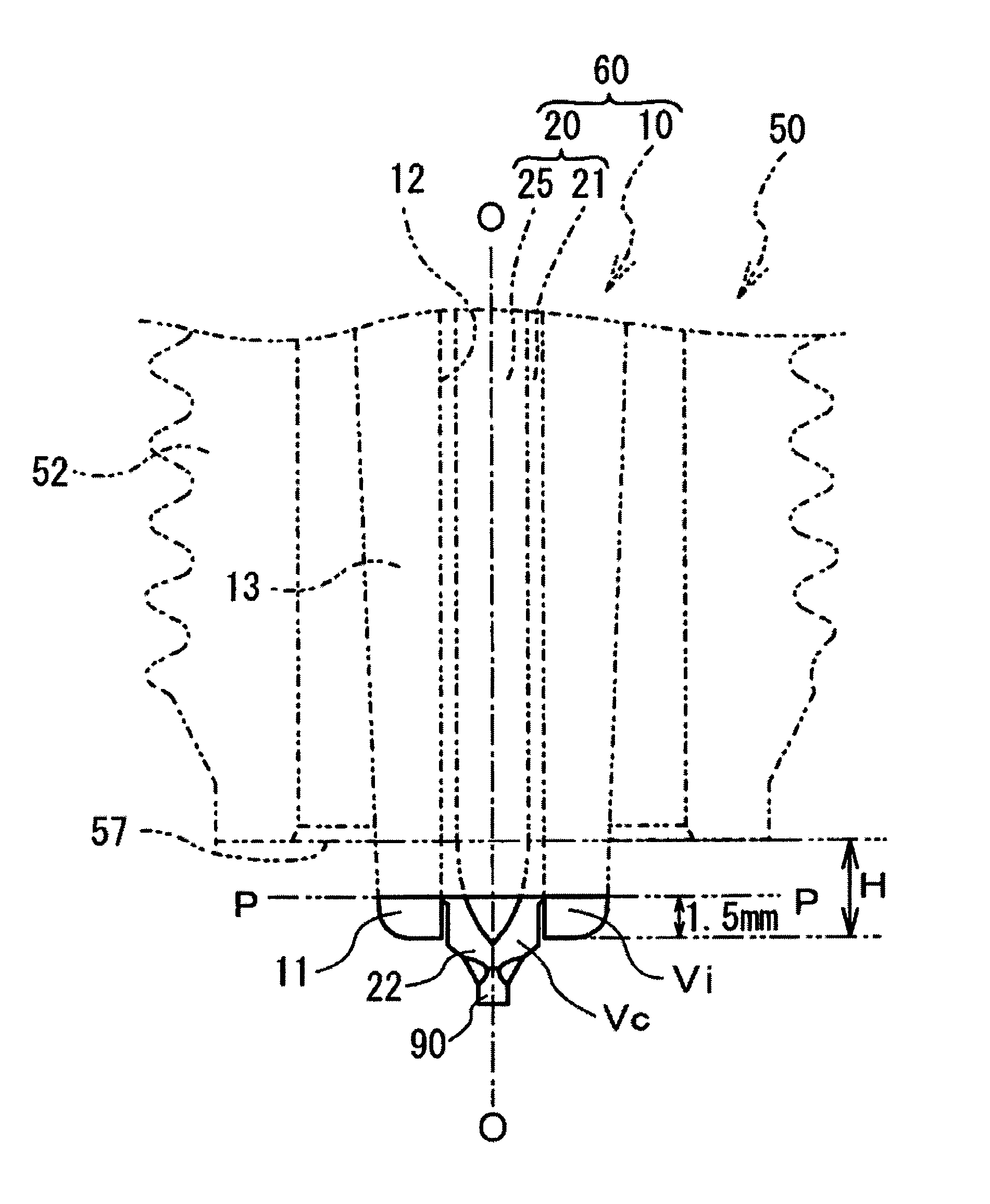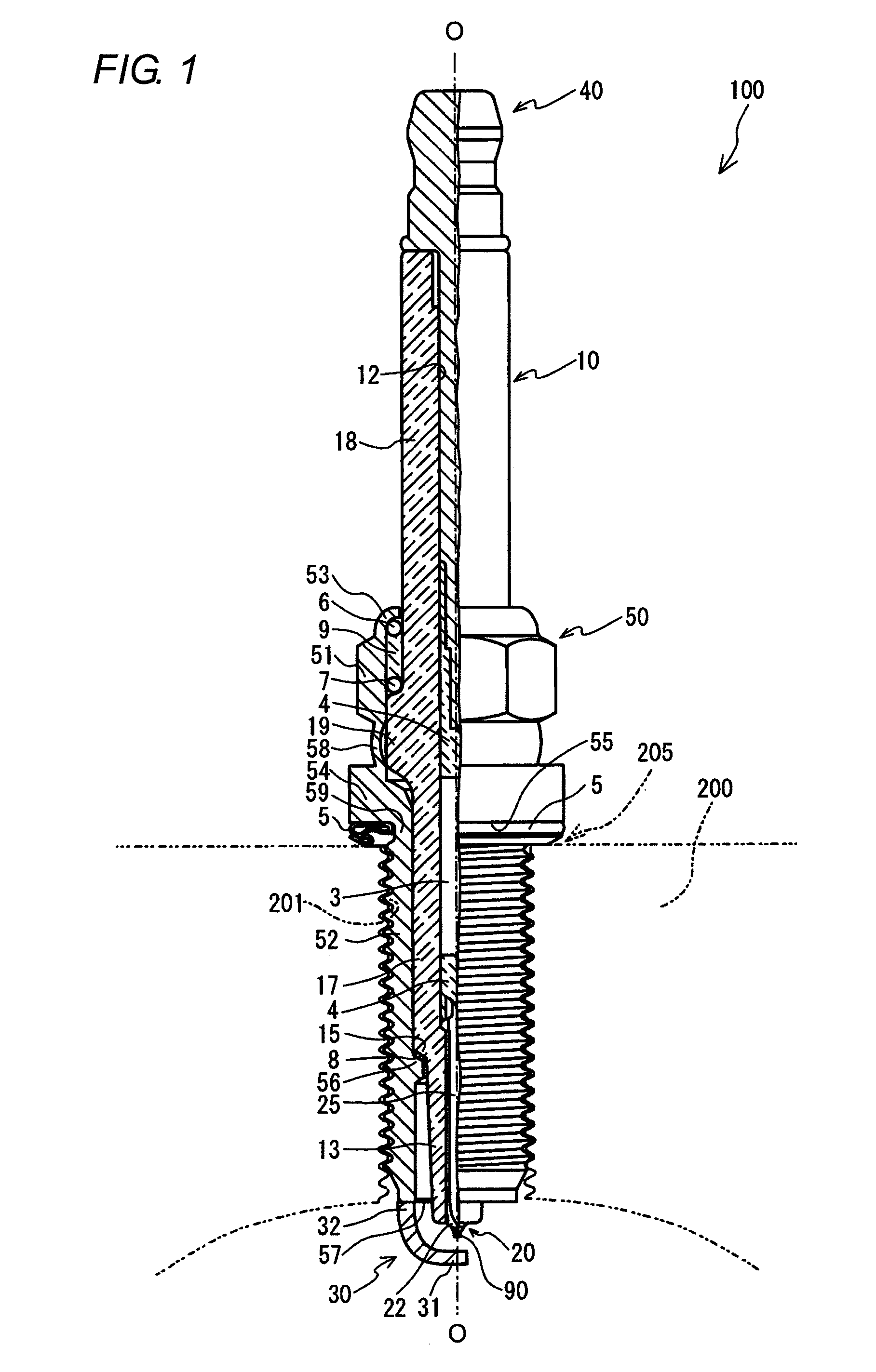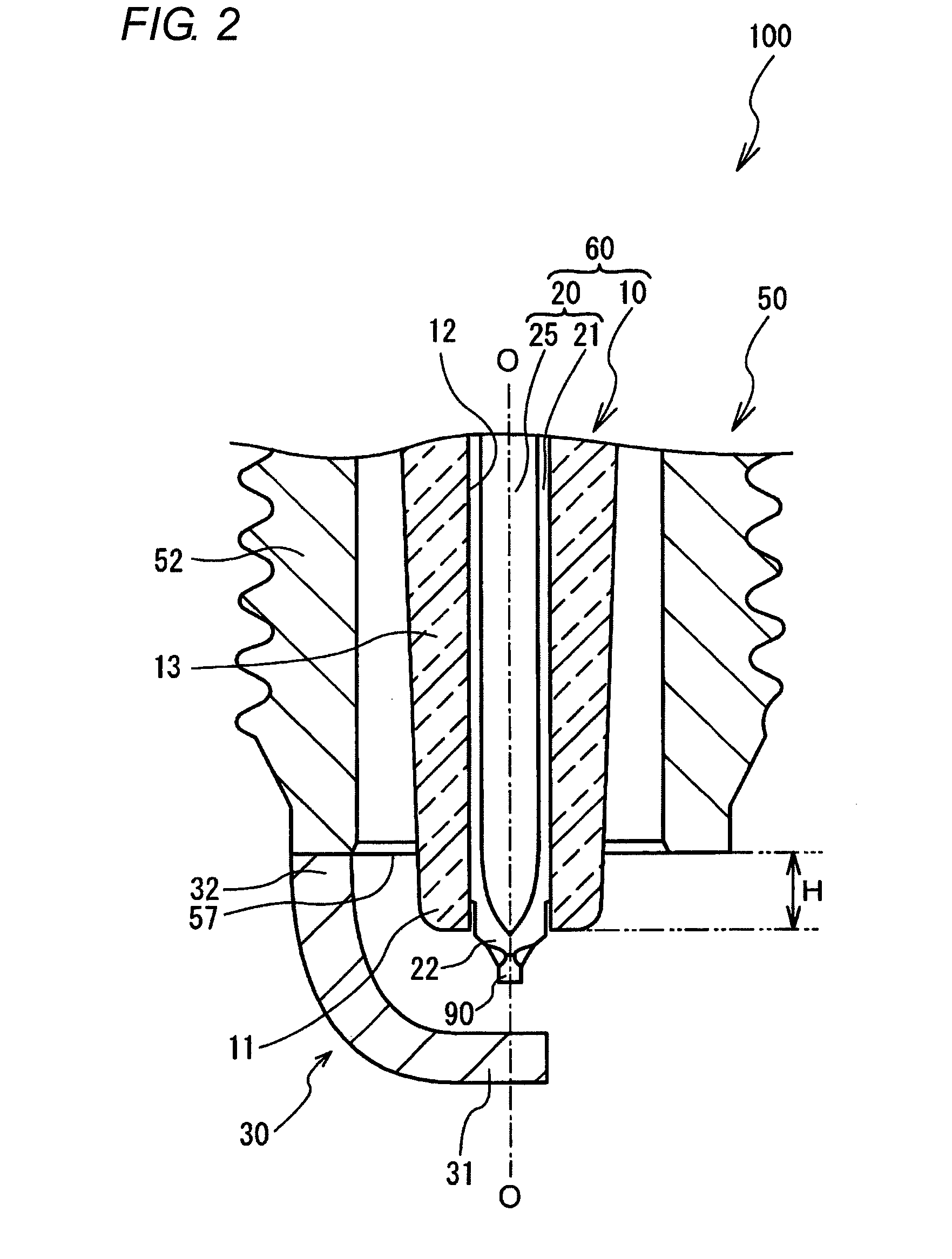Spark plug
a technology of spark plugs and spark plugs, which is applied in the direction of spark plugs, sparking plugs, basic electric elements, etc., can solve the problems of reducing the service life of spark plugs. , to achieve the effect of excellent carbon fouling recovery, increasing the temperature of insulators, and reducing the number of spark plugs
- Summary
- Abstract
- Description
- Claims
- Application Information
AI Technical Summary
Benefits of technology
Problems solved by technology
Method used
Image
Examples
example 1
[0059]In Example 1, the effect of H, Vi, and Vc exerted on the recovery property of carbon fouling was examined. First, in this test, four test sections in which H of the insulator differed were provided. Settings were provided such that H=0.8 mm for test section 1, H=1.8 mm for test section 2, H=2.8 mm for test section 3, and H=3.8 mm for test section 4. Pluralities of spark plugs, which satisfied H set for each test section and in which Vi and Vc were respectively varied appropriately, were respectively prepared for the respective test sections.
[0060]Next, a description will be given of the test conditions. First, spark plugs were dry-fouled on the basis of the dry fouling test of JIS D 1606 to prepare spark plugs with an insulation resistance value of 100Ω. Then, each spark plug with its insulation resistance value adjusted was mounted in an engine on a bench, and was held for two minutes under the conditions of the engine speed of 3000 rpm and the intake pressure of −30 MPa. Sub...
example 2
[0070]In Example 2, a withstand voltage test of insulators was conducted in the numerical ranges defined in Example 1. First, spark plugs which satisfied the respective ranges of H and Vi, which were excellent in the recovery property at the time of fouling in Example 1, were fabricated as samples. Specifically, 23 samples were fabricated by setting, as for H, three kinds, 1.8, 2.8, and 3.8, and by appropriately varying Vi in the range of 2.47 to 12.51 (mm3). It should be noted that the spark discharge gap was adjusted to 1.3 mm by taking electrode wear into consideration.
[0071]Next, a description will be given of the test conditions. As the engine, a 660 cc 3-cylinder turbocharged engine was used. As for the test pattern, the pattern consisted of 1 minute of idling (800 rpm) and 3 minutes at wide open throttle, and this pattern was repeated for 10 hours. Then, with respect to the respective samples after 10 hours, the recovery property of fouling was evaluated, and the voltage resi...
example 3
[0074]In Example 3, the effect of Vc exerted on the durability of the electrode tip welded to the front end portion of the center electrode was examined. In the durability test of the electrode tips, the residual ratio of the electrode tip after 100 hours of the durability test with the spark plug mounted in the engine was calculated. Here, the term “residual ratio” refers to the residual ratio of a portion of the electrode tip which does not include a molten portion, and was calculated by the following formula:
Residual ratio=(volume of electrode tip after durability test) / (volume of electrode tip before durability test)
[0075]It should be noted that the term “volume of electrode tip” refers to the volume of a portion of the electrode tip which does not include a molten portion.
[0076]Next, a description will be given of the test conditions. As the engine, a 2 L 4-cylinder engine was used. Then, a durability test was conducted continuously at WOT (5000 rpm) for 100 hours, and the resi...
PUM
 Login to View More
Login to View More Abstract
Description
Claims
Application Information
 Login to View More
Login to View More - R&D
- Intellectual Property
- Life Sciences
- Materials
- Tech Scout
- Unparalleled Data Quality
- Higher Quality Content
- 60% Fewer Hallucinations
Browse by: Latest US Patents, China's latest patents, Technical Efficacy Thesaurus, Application Domain, Technology Topic, Popular Technical Reports.
© 2025 PatSnap. All rights reserved.Legal|Privacy policy|Modern Slavery Act Transparency Statement|Sitemap|About US| Contact US: help@patsnap.com



